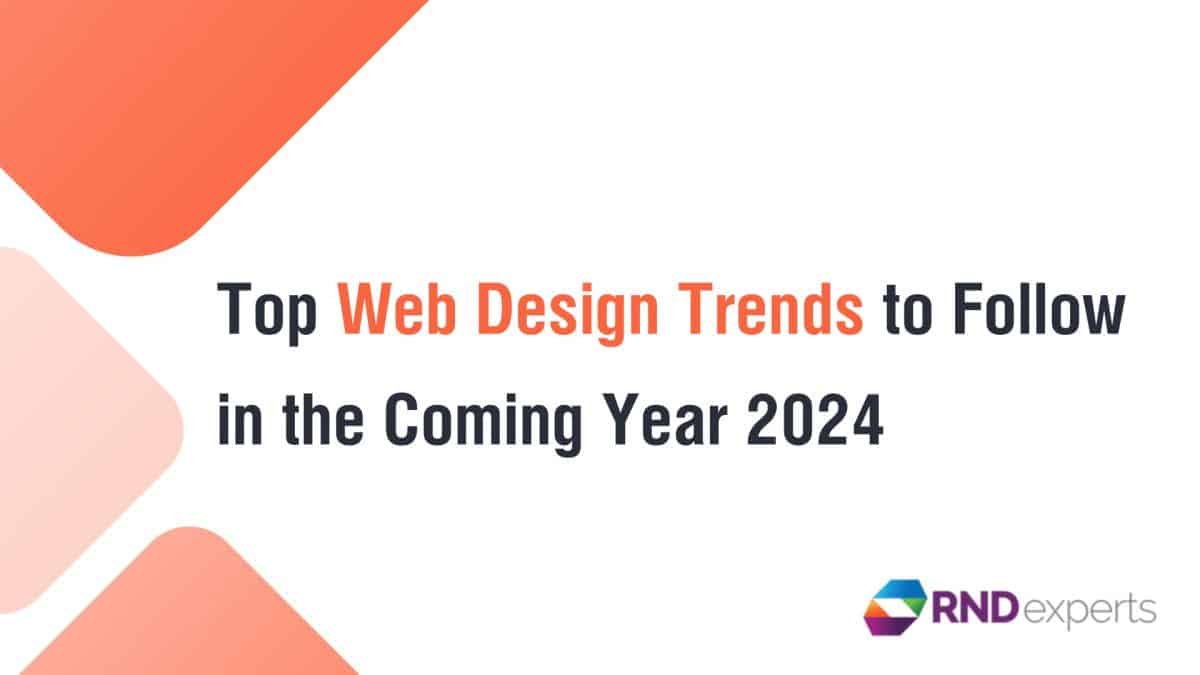As we approach a new era in web design trends, staying ahead of the curve is essential to creating visually stunning and user-friendly websites. In the ever-evolving digital landscape, design trends play a pivotal role in shaping the online experience. In the coming year, we anticipate a fusion of innovation and aesthetics, resulting in websites that not only captivate visitors but also provide seamless navigation. Let’s explore the top web design trends that will dominate the digital realm in the coming year.
1. Dark Mode Dominance in Web Design Trends
Dark mode isn’t just a passing trend; it’s a design choice that’s here to stay. With its ability to reduce eye strain, improve visual ergonomics, and enhance the overall user experience, dark mode is increasingly becoming a staple in web design. Expect more websites to offer users the option to toggle between light and dark modes to cater to individual preferences.
2. Immersive 3D Elements in Web Design Trends
As technology advances, so does the capability to create immersive 3D experiences on the web. Expect to see more websites incorporating 3D elements that not only add depth to the design but also engage users in a more interactive and memorable way. From product displays to entire website backgrounds, 3D elements will redefine the visual landscape of the internet.
3. Neumorphism: The New Skeuomorphism in Web Design Trends
Building on the success of flat design, neumorphism, or soft skeuomorphism, is gaining traction. This design style incorporates subtle shadows and highlights to create a digital interface that mimics the tactile nature of physical objects. Neumorphism strikes a balance between realism and minimalism, providing a fresh and modern aesthetic.
4. Bold and Vibrant Color Schemes in Web Design Trends
Say goodbye to muted tones; the coming year will witness a resurgence of bold and vibrant color schemes. Designers are increasingly using bright and daring color palettes to make websites stand out and evoke specific emotions. These lively colors not only grab attention but also contribute to creating a dynamic and visually appealing online presence.
5. Microinteractions for User Engagement in Web Design Trends
Microinteractions are small, subtle animations that respond to user actions, providing instant feedback. From button hover effects to interactive form validations, microinteractions enhance user engagement and make the overall experience more enjoyable. Expect to see an increased emphasis on these tiny but impactful design elements.
6. Minimalistic Navigation for Seamless User Journeys
Streamlining navigation is a timeless principle in web design, and in the coming year, minimalistic navigation will take center stage. Clean and intuitive navigation menus that focus on essential elements will not only simplify user journeys but also contribute to a clutter-free and visually appealing layout.
7. Accessibility Takes the Spotlight in Web Design Trends
Web design is becoming more inclusive, with a heightened focus on accessibility. Designers are prioritizing features that make websites usable for individuals with disabilities. This includes ensuring compatibility with screen readers, providing alternative text for images, and creating layouts that are navigable with keyboard inputs. Accessibility isn’t just a trend; it’s a crucial aspect of responsible and user-centric design.
8. Scroll-triggered Animations
In the coming year, expect to see an increase in scroll-triggered animations that dynamically respond to users’ scrolling actions. These animations add an element of surprise and delight, keeping users engaged as they explore different sections of a website. From fading in images to revealing content in a sequence, scroll-triggered animations enhance the storytelling aspect of web design.
9. Combination of Photography and Graphics
The fusion of real-world photography with bold graphic elements creates a visually compelling and unique design style. This trend allows websites to convey a sense of authenticity while incorporating creative and eye-catching graphics. Striking this balance can result in a memorable visual identity that sets a brand apart in the digital landscape.
10. Augmented Reality Integration
As technology continues to advance, augmented reality (AR) is making its way into web design. While not yet ubiquitous, we anticipate an increase in AR integrations that enhance user experiences. This could include virtual try-on features for e-commerce websites, interactive AR elements for educational platforms, and more, adding a layer of interactivity that was once limited to dedicated AR applications.
In conclusion, the coming year promises an exciting evolution in web design, with a focus on user engagement, aesthetics, and technological innovation. Embracing these trends can help businesses and designers create websites that not only meet the functional needs of users but also leave a lasting impression in the ever-expanding digital landscape. Whether you’re a seasoned designer or a business owner looking to revamp your online presence, staying attuned to these trends will undoubtedly shape a more captivating and user-centric web experience.





